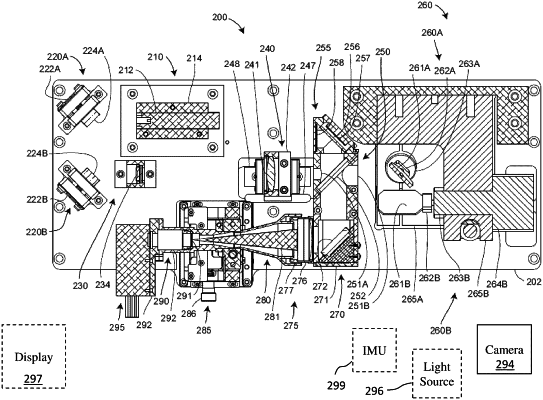| CPC G02B 7/005 (2013.01) [G01B 7/30 (2013.01); G01S 7/4814 (2013.01); G01S 7/4817 (2013.01); G01S 17/89 (2013.01); G02B 26/105 (2013.01); G06T 7/75 (2017.01); G06T 2207/10028 (2013.01); G06T 2207/20212 (2013.01)] | 16 Claims |

|
1. A method of aligning a light projector and an electronic model in an environment, the method comprising:
placing the light projector in the environment;
scanning the environment with a laser scanner to obtain a plurality of three-dimensional coordinates in the environment, a portion of the plurality of three-dimensional coordinates being on a surface;
extracting the surface from the plurality of three-dimensional coordinates;
generating at least two topographical curves based on a flatness of the surface;
projecting a light pattern on the surface with the light projector based at least in part on the at least two topographical curves;
selecting between acquiring an intensity image and a two-dimensional (2D) photographic image corresponding to the environment having the surface;
acquiring a selected one of the intensity image and the 2D photographic image of the environment;
identifying a plurality of features based on the selected one of the intensity image and the 2D photographic image;
associating the plurality features in the environment with a plurality of points in the electronic model; and
aligning the light projector to the electronic model based at least in part on the plurality of features and the plurality of points.
|